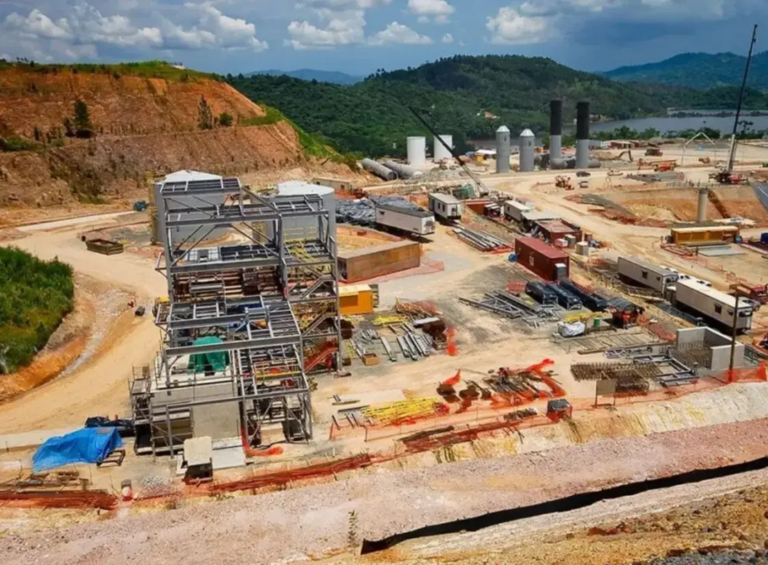IMF foresees Dominican GDP becoming the seventh largest by 2024
| 127,913 | 120,126 | 113,965 |
| 2024. The International Monetary Fund (IMF) forecasts that the Dominican gross domestic product (GDP) will reach US$127,913 million by 2024. | 2023. At the end of November 2023, the national GDP reached US$120,126.4 million, for an increase of 35% in just four years. | 2022. In 2022, the value of the Dominican GDP increased by 20.4%, going from US$94,591.4 million in 2021 to US$113,965.9 million. |
Although the economies in Latin America and the Caribbean have faced multiple challenges over the years, they have adapted to changes over the past four decades to cope with shocks such as rising inflationary pressures, global uncertainty, rising debt, and low commodity prices.
Despite these adaptations cited by the World Bank (WB), the World Economic Forum (IMF) warns the region needs to implement more structural reforms and strengthen investment in infrastructure, skills development, and innovation.
The Dominican Republic is a clear example of both sides of the coin. Despite facing challenges, having been one of the poorest countries in Latin America and the Caribbean in the mid-1960s, or the debt crisis in the 1980s, it has shown some of the fastest growth.
Looking ahead, the outlook for the Caribbean destination does not look very different. As the IMF points out, with the right policies, the Dominican Republic has the potential to become an advanced economy in the next 40 years.
A bit of history
Over the past half-century, the Dominican Republic has shifted from dependence primarily on agriculture to manufacturing, due to free trade zones, and then to a service-driven economy thanks to the exploitation of natural resources.
Today, the country maintains a balanced mix of industries and sectors, including those mentioned above. As a result, since 2010, gross domestic product (GDP) grew at an annual average of 5.8%, making the nation the fastest-growing economy in Latin America and the Caribbean, which grew at an annual rate of 2%. during the same period. This evolution allowed the island to go from tenth place in the 1980s to seventh place in 2024, according to IMF forecasts, surpassing economies such as Venezuela, Ecuador and Guatemala.
During the 1990s, when manufacturing figured as the main pillar of the economy, changes in global trade agreements made the initial specialization of free trade zones in textiles and apparel less competitive. Since then, national development strategies have increasingly favoured growth activities such as tourism.
A report by the Organisation for Economic Co-operation and Development (OECD) details that from 1991 to 2018, in parallel with the decline in manufacturing (which declined from 22% to 10%) as a percentage of GDP, government services increased from 5% to 14% in 2018. This interest was reflected in employment. Between 2000 and 2016, total employment increased by 39%, from 3 million to 4.2 million, with a large proportion of those vacancies being absorbed by commercial and government services.
But then tourism gained more prominence. In 1980, 383,280 visitors arrived in the country, a number that increased to 1,305,358 a decade later. From 2000, when the country had climbed to ninth place, to 2018, the number of tourists more than doubled, from 3.3 to 7.2 million, an average annual growth of 5.5%. In 2023, that number surpassed 10 million.
In 2021, tourism’s total direct and indirect contribution accounted for 365,665 jobs. The country is now the top tourist destination in the Caribbean, reaching a 12.03% share of air and land tourist arrivals in the region, including Mexico.
According to data from the World Tourism Organization (UNWTO), this represents an expansion of 1.9 percentage points since 2010, when the indicator was 10.13%. With $7.5 billion in revenue from this sector in 2018, the country alone was responsible for 19.7% of the region’s total revenues, followed by Brazil (15.9%), Colombia (13.2%) and Argentina (13.9%), according to the OECD.
Foreign Exchange Income
Between 2016 and 2019, the country attracted approximately $10 billion of total foreign direct investment (FDI), corresponding to 1.8% of the total flow in the region, similar to Costa Rica.
The OECD report cites that during that period, the ratio of FDI inflows to GDP stabilized at around 3.7%, above the regional level of 2.8%. The stock of FDI as a percentage of GDP is in line with the regional average of 47% and below other economies that rely heavily on foreign investment, such as Costa Rica (63%) and Panama (80%).
The largest share of FDI is in tourism, which in the reporting period accounted for 29% of total capital expenditure and 55% of total jobs created through greenfield FDI.
By 2020, the nation had climbed one more place in the top 10 most developed economies in the region, to eighth place, and by 2023, FDI exceeded US$4.3 billion, according to the Export and Investment Center of the Dominican Republic (ProDominicana).
Another outstanding factor about growth is the arrival of remittances, which locally represent just over 7% of GDP, while FDI represents 3.7%, according to an OECD report.
Since the 1990s, remittance flows have grown by an average of 5% annually and last year reached US$10,157.2 million. This is how the Dominican diaspora contributes to local development through the remittance of foreign currency.
About the author
Joan Sebastian Vallejo
Journalist trained in print and digital media. The professional endorsement includes the creation of multiplatform content, coordination of news programs in Noticias SIN with Alicia Ortega and journalist specialized in Nuria Piera’s newspaper.
This article was published in ElDinero edition Nº 428. 15 February, 2024.
Source:


